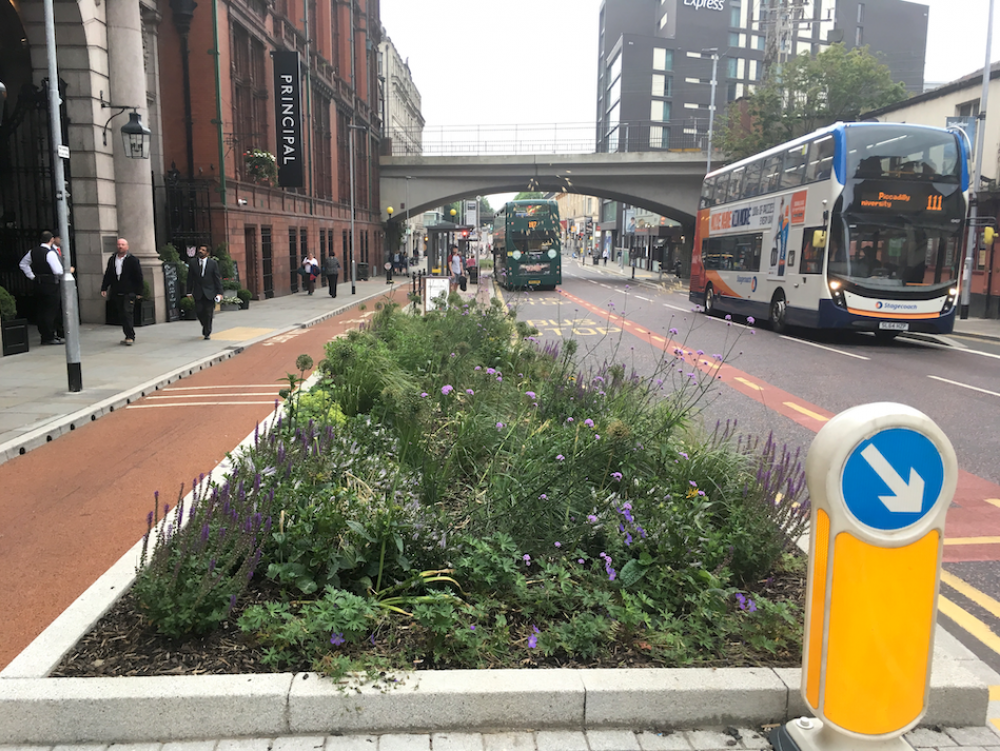Greening Grey Infrastructure
Recent collaborative research led by the University of Glasgow explored the question: How do we green the parts of our cities and towns that need to remain grey for their primary function like seawalls, pavements and bridges? The report of this 18 month study was guidance that is relevant to all our towns. The Urban Bundle appendix in particular gives plenty of examples of ways in which towns can be greened, including:
- Tree, orchard and hedge planting in public spaces.
- Rain gardens in car parks and along streets and in car parks.
- Planted areas rather than traffic islands to separate carriageways.
- Green screens or ‘living walls’ around schools and other buildings and premises.
- Green retaining walls alongside railways and elsewhere.
- Planting as part of street furniture like benches.
- Green embankments and reed beds along watercourses.
- Green arches and pillars for climbing plants.
- Bee walls, bricks and benches.
For towns on rivers or the coast, the Coastal Bundle appendix provides a range of examples which can be used to green river and coastal areas to improve biodiversity of flood risk management measures and where we can make space on land, they can help us adapt our cities and towns to be more climate resilient to sea level rise risks.
